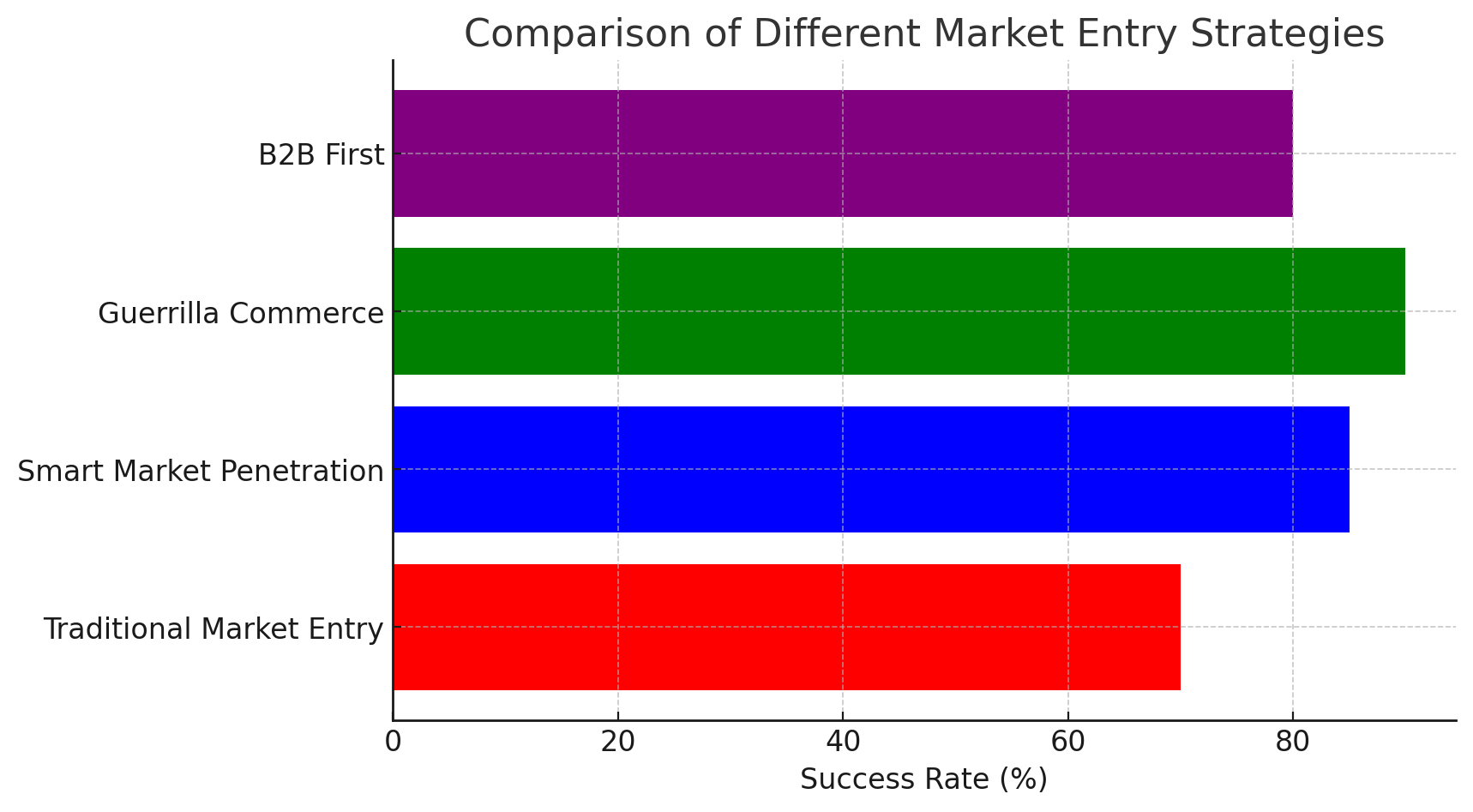Smart Strategies for Entering Global Markets Without Massive Investment
1. Guerrilla Commerce – Entering Markets Under the Radar with Unconventional Tactics
- Leveraging Parallel Markets and Niche Communities – Instead of targeting mainstream consumers, focus on expat communities or diaspora markets.
- Entering Through Small-Scale B2B Networks – Rather than competing with industry giants, integrate into their supply chains through smaller distributors.
- Partnering with Local Niche Brands – Collaborate with regional businesses looking to expand their product offerings.
2. Precision Market Penetration – Strategic, Targeted Entry into Global Markets
- Dominating a Niche Segment Instead of Competing Head-On – Identify gaps in the market where competition is lower.
- Using Digital Marketing to Target Specific Customers – Platforms like LinkedIn, Google Ads, and TikTok can drive demand without the need for a physical presence.
- Exploring Secondary Markets Instead of Saturated Ones – Emerging regions such as the CIS, Africa, and Eastern Europe offer faster growth with fewer barriers.
3. The "B2B-First" Model – Entering Markets Through Business Networks
- Finding Local Distributors and Sales Agents – Partnering with established networks reduces the burden of logistics and compliance.
- Collaborating with Service Providers Already Operating in the Market – Logistics firms, legal consultants, and supply chain partners can serve as market entry points.
- Becoming Part of the Supply Chain for Larger Brands – Major companies prefer agile and cost-effective suppliers rather than large-scale competitors.
Comparing Market Entry Strategies
A visual comparison of market entry methods demonstrates that unconventional approaches like Guerrilla Commerce and Smart Market Penetration often have a higher success rate than traditional methods.

Real-World Examples of Small Businesses Succeeding in Global Markets
Example 1: A Small Brazilian Brand That Conquered Europe
🔹 Company: Havaianas – A flip-flop manufacturer.
🔹 Strategy: Focused on diverse and colorful designs.
🔹 Result: Transformed into a global brand with a presence in over 80 countries.
Example 2: A Little-Known Chinese Manufacturer That Became a Global Brand
🔹 Company: Anker Innovations – A manufacturer of electronic accessories.
🔹 Strategy: Prioritized high quality at an affordable price.
🔹 Result: Successfully penetrated the U.S. and European markets.
Example 3: A Family Business in Turkey That Became a Global Exporter!
🔹 Company: Simit Sarayı – A bakery chain.
🔹 Strategy: Combined local cultural elements with international standards.
🔹 Result: Expanded to over 25 countries worldwide.
Key Takeaways
- Entering global markets may seem daunting, but with the right strategies, even small businesses can succeed.
- Breaking into international markets doesn’t require massive investment—it requires smart, unconventional tactics.
- Whether it’s leveraging parallel markets, utilizing digital marketing, or integrating into global supply chains, businesses that think differently will always have the advantage.
What’s Your Take?
Have you or your business explored international markets? What strategies worked for you? Share your thoughts in the comments!

Write your comment.